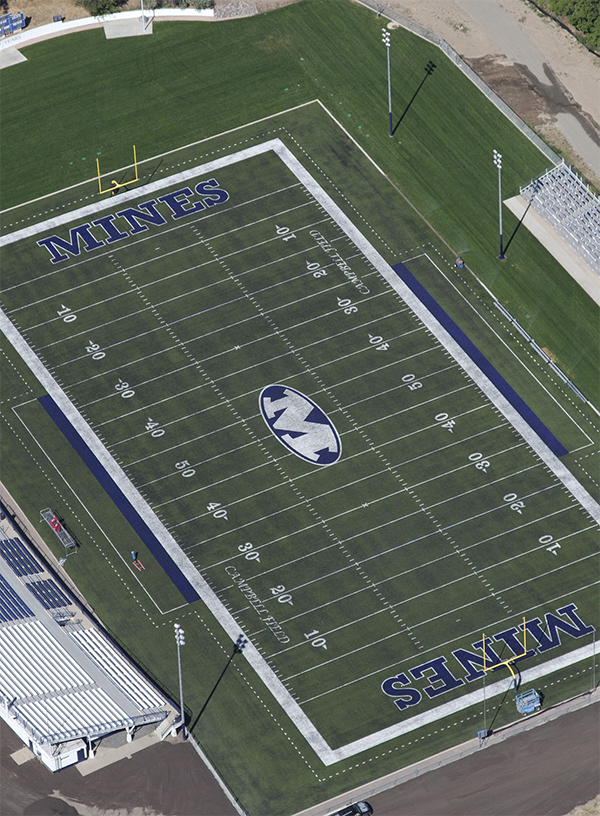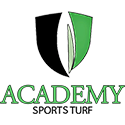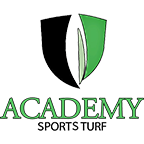What makes this synthetic "In-Filled" turf different than "Traditional" artificial turf?
The older “carpet style” turf was hard, abrasive, looked bad, and worst of all’ there was no “give” to it when a player made a hard cut or turn. This resulted in increased stress on joints, which sometimes led to serious injury. The new “in-filled” synthetic turf looks like natural grass and plays like natural grass. The in-fill, with rubber or a combination of sand and rubber, acts like a natural shock absorber to help prevent serious injuries.
How safe is it?
In addition to being non-abrasive, In-filled synthetic turf also prevents injuries such as turf toe and foot lock, decreasing lower extremity, non-contact injuries. Being non-abrasive, it will also prevent rug burns. It is excellent for all sports including football, soccer, lacrosse, and rugby. Academy Sports Turf has direct quotes from NFL players regarding these issues.
What type of shoes do I buy for my players?
Use a natural grass cleat. Athletes and coaches praise the consistency of the playing surface. It plays almost exactly the same, whether it’s raining, snowing, sleeting, or dry; therefore, only one kind of shoe is required.
How does the ball react to the surface?
Balls will play and respond similarly to a natural grass field. – See G-Max Definition
How do you maintain the synthetic turf?
Upon purchasing a synthetic field, Academy Sports Turf will provide a brush attachment for collecting debris. We also provide a sweeper attachment to maintain the integrity of the fibers as to make the field look like new at all times. Academy Sports Turf will train the maintenance personnel on how to use this equipment to maintain a synthetic sports field.
How much will a field cost to install?
There are many factors that go into the final cost of a particular project. Generally, the final cost of a project is around $5.00 per square foot for a full size football or soccer field.
Cost Factors
- Surface area
- New field vs Renovation
- Availability of materials
- Drainage requirements
- Field border material
What is the replacement cost for a synthetic field?
Without all the preparation that goes into constructing a sports field, approximate costs would be around $4.00 per square foot.
How many years will the turf last?
Life expectancy will vary with the type of use, sports played, foot traffic, climatic conditions, and maintenance practices; however, you can expect the playability to remain consistent for 10-15 years.
What is G-Max?
A. G-Max is the value given to the shock attenuation value, or hardness of the surface. The higher the number, the harder the playing surface. Natural grass fields have an average G-Max rating of approximately 80-140, depending on the moisture in the soil. A muddy grass field will have a G-Max value of approximately 65 and a frozen grass field will have a G-Max value of approximately 225. If coaches and players have a preference, Academy Sports Turf will be able to attain any specified G-Max value.
What can our school do to reduce the initial cost of installing a field?
The best way to reduce the initial cost is to use a less expensive material outside the playing area, and to negate the use of of an undersurface pad. Academy Sports Turf can attain a reasonable G-Max rating without the use of a pad. As far as material outside of the playing area, we recommend any of the following:
Field Perimeter Alternatives
- Natural grass
- Asphalt
- Concrete
What is "Matting" or "Crush"?
Matting or Crush refers to the individual synthetic fibers losing their integrity and laying down. Over time, it will be harder for these fibers to stand up, but using a sweeper attachment will help the fibers maintain a good aesthetic appearance. Crush does NOT mean the fibers breakdown or disintegrate, so playability will remain good.


